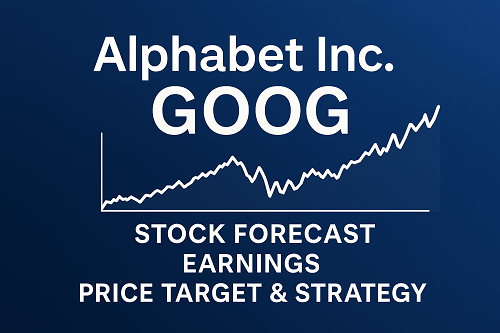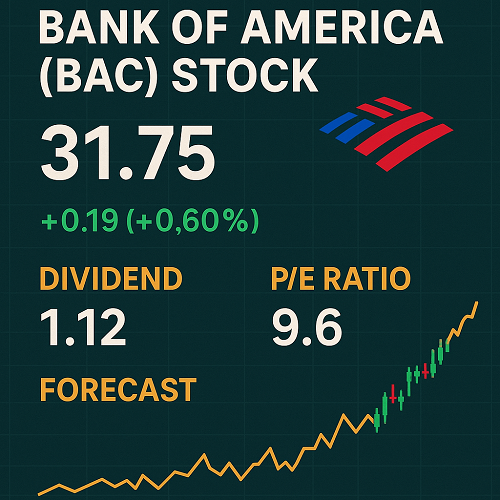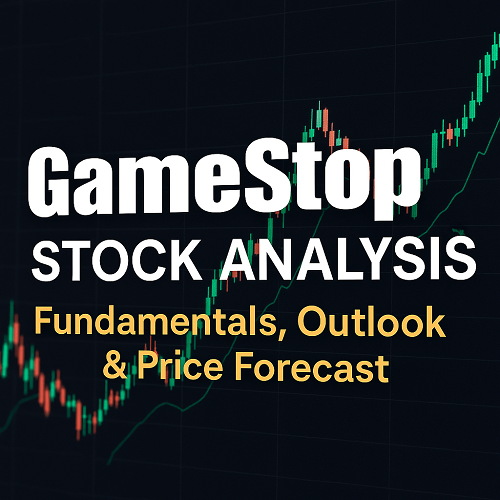VTI (Vanguard Total Stock Market ETF) is an exchange-traded fund designed to track the CRSP U.S. Total Market Index. For those looking into index funds, it’s worth comparing VTI with VTSAX stock for a comprehensive investment strategy.
- It offers broad exposure to the U.S. equity market, spanning large-, mid-, small-, and micro-cap stocks.
- The fund was launched on May 24, 2001.
- Vanguard uses a passive, index-sampling approach to approximate the full index while minimizing turnover and tracking error.
- Its expense ratio is extremely low at 0.03% (net), making it one of the cheapest broad-market ETFs available.
VTI aims to serve as a “core equity holding” for investors who want a low-cost, hands-off way to own essentially the entire U.S. stock market.
Index Methodology & How VTI Is Constructed
CRSP U.S. Total Market Index
- VTI tracks the CRSP U.S. Total Market Index, which covers nearly 100% of the U.S. investable equity market.
- The index is market-cap weighted, meaning larger companies carry proportionally higher weights.
- To reduce costs, Vanguard often uses a representative sampling technique rather than full replication.
Portfolio Construction
- VTI holds thousands of U.S. equities, typically on the order of 3,300–3,600 names depending on index rebalancing.
- Turnover is modest, which keeps trading costs low and enhances tax efficiency.
- Cash or small amounts of non-equity exposure are minimal—VTI stays essentially fully allocated to equities.
Because of this construction, VTI delivers near-index performance with minimal drift or tracking error.
Key Metrics & Fund Characteristics
Here’s a snapshot of VTI’s most important quantitative metrics (as of latest available data):
| Metric | Value / Range | Interpretation |
|---|---|---|
| Expense Ratio (Net) | 0.03% | Extremely low — among the lowest in the ETF universe |
| Net Assets / AUM | ~$1.9–2.0 trillion (varies) | Very large, high liquidity |
| Dividend Yield | ~1.1%–1.2% (annual) | Modest yield, typical for a growth-biased broad market ETF |
| Beta (5Y) | ~1.03–1.05 | Moves roughly in line with the broad U.S. market |
| Category / Style | “Large Blend” (Vanguard / U.S. Equity) | Reflects the dominant sectors / caps |
| YTD Total Return | ~14.8% (or similar) | Strong performance in 2025 |
| 1-Year, 3-Year, 5-Year Returns | See below in historical section | Useful for benchmarking performance |
Note: These values fluctuate with market movements, dividend changes, and index reconstitutions. Always consult real-time data. (e.g. Yahoo Finance “Performance” tab)
Sector & Market-Cap Exposure
Sector Allocation
Because VTI captures the whole U.S. market, its sector weights roughly mirror the U.S. equity market. As of recent data:
- Technology: ~32–33%
- Financial Services: ~13–14%
- Consumer Cyclical: ~10–11%
- Healthcare, Communication Services, Industrials, Consumer Defensive, Energy, Real Estate, Utilities, Materials also make up the remaining portions.
Because of its scope, VTI tends to overweight high-growth sectors slightly (e.g. tech) in bull markets and underweight in contracting sectors.
Market-Cap Breakdown
VTI’s holdings span all market capitalizations:
- Large / Mega-cap: Typically ~70% or more of the fund’s weight.
- Mid-cap: A meaningful slice (often ~15–20%)
- Small / Micro-cap: Smaller weight, but these add breadth and growth upside
Because of this structure, VTI captures both stable earnings from big names and growth potential from smaller companies.
Historical Performance & Return Drivers
Long-Term Returns
- Since inception (2001), VTI has averaged approximately 8.8% annualized (through late 2024)
- Over shorter timeframes, recent returns have varied widely—e.g., one-year returns of 30–40% in strong bull years, or negative returns during market downturns.
Return Drivers
- U.S. economic growth & corporate earnings — as the broad U.S. market expands, VTI captures that through its holdings
- Sector leadership cycles — VTI benefits when growth or tech sectors lead
- Small-cap / mid-cap reversions — periods when smaller-cap stocks outperform can boost VTI’s alpha over strictly large-cap ETFs
- Dividend contributions & reinvestment
- Cost control — low expense ratio and low trading friction help preserve returns
Performance Examples
- In strong bull phases, VTI’s broad exposure allows it to participate fully in market advances
- In downturns, VTI tends to decline in line with the broader U.S. market (its beta is roughly ~1)
Comparing multi-year returns can help investors see that VTI is a core holding rather than a market-timing vehicle.
Risk Profile & Volatility Analysis
Market Risk (Systematic)
- Because VTI holds the entire U.S. market, it is fully exposed to market-wide pullbacks, recessions, interest rate shocks, and external macro events
- Its beta being ~1 means it tends to rise and fall in sync with the U.S. equities market
Volatility & Drawdowns
- Sharp drawdowns in 2008, 2020, or during COVID-19 reflect that VTI is not insulated from systemic risks
- However, its diversification (across sectors and caps) tends to soften idiosyncratic risks compared to holding single stocks
Other Risks
- Concentration risk: Although broadly diversified, a few mega-cap names (Apple, Microsoft, NVIDIA, Amazon, etc.) can carry outsized weight.
- Sector rotation risk: If the market shifts away from growth/tech, VTI may underperform more defensive or niche ETFs
- Interest rate / inflation risk: Rising rates or inflation pressures can hurt equities broadly
- Tracking error / sampling risk: Very small, but possible when Vanguard uses sampling rather than full replication
Because VTI is a “core market” ETF, it is best used as part of diversified portfolios (e.g. alongside bonds, international equities, alternatives) to buffer risks.
Dividend Policy & Yield Trends
- VTI pays dividends quarterly.
- The current yield is around 1.1% to 1.2% annually (variable).
- Over the past year, dividend payouts (aggregate) have grown modestly.
- Because it’s a broad equity fund, dividend yield is not its primary appeal; the emphasis is on growth + total return
Reinvesting dividends is crucial in accumulating long-term wealth with VTI, because compounding over decades magnifies total returns.
VTI vs. Alternatives (VOO, ITOT, SCHB, etc.)
It’s useful to compare VTI with similar broad-index ETFs:
| Ticker | Index Tracked | Expense Ratio | Coverage & Differentiation |
|---|---|---|---|
| VTI | CRSP U.S. Total Market | 0.03% | Full market coverage (large to micro-cap) |
| VOO | S&P 500 | 0.03% | Large-cap only — less small/mid exposure |
| ITOT | S&P Total Market / similar | 0.03% | Broad market, direct competitor |
| SCHB | Dow Jones U.S. Broad Stock Market | ~0.03% | Similar approach, slight differences in sampling |
| SPY / IVV | S&P 500 | 0.03%–0.04% | More liquid, but narrower focus |
- Small/mid-cap tilt: VTI has more exposure to smaller stocks than pure large-cap funds (VOO, IVV)
- Diversification: VTI gives you “all of U.S. equities in one fund” — you don’t need multiple funds to cover the market
- Liquidity: VOO and SPY may have tighter spreads or slightly better liquidity in extreme volumes, but VTI is highly liquid given its scale
- Tracking error & cost: All of these low-cost ETFs are very competitive in tracking performance; in many cases, differences will be minor over the long run
For many investors, VTI is preferred as a one-stop U.S. equity solution; others may blend it with regionals or thematic ETFs depending on strategy.
Ideal Use Cases in Portfolio Construction
Here’s how VTI is commonly used:
Core Equity Holding
- Use VTI as the backbone equity allocation in portfolios (e.g. 50–70% weight), with the remainder in bonds, alternatives, or sectors
- Because it spans the full U.S. market, you reduce the need to pick separate small- or mid-cap funds
Dollar-Cost Averaging / Systematic Investing
- Investing fixed contributions into VTI over time helps smooth volatility and reduces timing risk
- Rebalancing periodically ensures you’re not overexposed to sectors that run up
International Diversification Complement
- Pair VTI with international equity ETFs (e.g. VXUS) or regional funds to diversify beyond the U.S.
- Use bonds or fixed income (e.g. BND, AGG) to balance equity volatility
Retirement Accounts, Tax-Advantaged Vehicles
- VTI is frequently used inside IRAs, 401(k)s, or equivalent accounts because of its low cost and long-term growth prospects
- Its tax efficiency (low turnover) makes it well suited for taxable accounts, too
Tactical Overlays and Tilts
- For more advanced investors, VTI can act as baseline exposure while tactical weights or sector overlays (e.g. tech, healthcare) are added
- Use options or hedges (e.g. covered calls) on VTI if desired for income or protection
In nearly all cases, the goal is to leverage VTI’s broad exposure while layering risk control and diversification around it.
Tax Efficiency & Cost Considerations
Expense and Cost Efficiency
- The 0.03% expense ratio means that for every $10,000 invested, the annual cost is just $3.
- Combined with low turnover and efficient sampling, VTI keeps internal costs minimal
Tax Efficiency
- Because Vanguard uses in-kind creation/redemption mechanisms, VTI can pass realizations to large institutional participants rather than retail holders, minimizing capital gains distributions
- Its low turnover further reduces the chance of forced selling
- Dividends are taxed when distributed; qualified dividend rules may apply depending on jurisdiction
- In taxable accounts, this tax efficiency is a significant advantage vs. actively managed funds
Trading Costs & Liquidity
- Tight bid-ask spreads and high trading volume in VTI reduce friction for investors.
- Because of its scale, large institutional trades are supported without significant price impact
In sum: VTI offers a potent combination of ultra-low cost and high tax efficiency — essential for maximizing net returns over long holding periods.
How to Buy, Hold, and Rebalance
Buying VTI
- VTI trades on U.S. stock exchanges (e.g., NYSE Arca).
- You can buy fractional shares on many brokerages today
- Use limit orders or market orders depending on volatility; often market orders suffice given liquidity
Holding & Monitoring
- Because it’s broadly diversified, minimal active oversight is needed
- Monitor macro risk, sector shifts, and yield changes
- Periodically check if allocations drift (e.g. too much in tech)
Rebalancing
- Typically, annual or semi-annual rebalancing is sufficient
- If your portfolio diverges beyond a set threshold (e.g. ±5%), rebalancing helps maintain risk targets
- When rebalancing, consider tax implications if held in taxable accounts
Laddering / Phased Investments
- Don’t invest all at once if worried about volatility — dollar-cost average into VTI over weeks/months
- Use other ETFs or assets to hedge short-term risk if desired
Current Outlook, Macro Drivers & Forecasts (2025 and Beyond)
Macro Factors to Watch
- Interest rates & Fed policy: Rising rates can compress valuations; unexpected cuts could fuel growth sectors
- Inflation trends: Persistent inflation may erode margins, especially for lower-margin companies
- Earnings growth: Corporate profit expansion is central to broader equity returns
- Sector rotation: A shift away from tech/growth toward value or cyclical sectors could change performance dynamics
- Geopolitical risk, regulation, trade policy: These exert asymmetric risks on key sectors
- Valuation multiples: If multiples contract (P/E compression), even modest earnings could lead to flat returns
2025 Outlook (hypothetical)
- Base case: moderate U.S. growth, stable inflation, slight rate cuts in H2 — equities likely to deliver mid-to-high single-digit total returns
- Upside: A tech rebound, strong consumer spending, global growth surge
- Downside: A recession, higher-than-expected inflation, monetary policy overly tight
Forecast Scenarios
| Scenario | Estimated Annual Return | Drivers |
|---|---|---|
| Normal / Base | 6–9% | Continued earnings growth + modest multiple expansion |
| Bull | 10–12%+ | Strong growth, easing rates, sector rally |
| Bear / Risk-off | 0–4% or negative | Recession, multiple contraction, capital flight to safe havens |
Investors should calibrate expectations — past long-term returns (≈8–9%) don’t mean future will always match, especially in changing macro regimes.
Frequently Asked Questions (FAQs)
Q: Is VTI better than just holding the S&P 500 (e.g. VOO, SPY)?
A: It depends. VTI gives you broader exposure (small and mid caps) which can add upside, but in volatile or risk-off periods, its extra small-cap exposure may drag. For many, combining VTI with an international or bond allocation is more efficient than only holding the S&P 500.
Q: Should VTI be held in taxable or tax-advantaged accounts?
A: While VTI is tax-efficient, holding it in tax-advantaged accounts (IRAs, 401(k)s) further shields dividends and gains from taxes, especially for long-term investors.
Q: How often does VTI rebalance?
A: Vanguard typically rebalances on a quarterly or semi-annual schedule to match index updates, though some internal adjustments may occur more often.
Q: What is the tracking error of VTI?
A: Very low — Vanguard’s methodology and scale ensure minimal divergence from the target index over time.
Q: How does VTI perform in bear markets?
A: VTI will generally fall in line with U.S. equities. In drawdowns (e.g. 2008, 2020), losses have been steep, but recovery has historically followed. The breadth helps soften idiosyncratic risk, though not systemic risk.
Conclusion & Final Thoughts
VTI stands out as one of the most compelling core equity vehicles for long-term investors:
- Ultra-low cost (0.03%)
- Broad U.S. market exposure (large, mid, small caps)
- High liquidity and tax efficiency
- Minimal maintenance required
However, it’s not a silver bullet. For optimal results:
- Combine with bonds, international assets, or hedges for risk balance
- Be mindful of macro cycles and valuations
- Use disciplined rebalancing and reinvestment to maximize compounding
If you deploy VTI as your central U.S. equity position, you gain coverage across the full spectrum of U.S. equities with elite cost and tax characteristics. That’s a powerful foundation in any diversified portfolio.





 XAUT-USD
XAUT-USD  AMD
AMD  MARA
MARA  SHOP
SHOP  BULL
BULL  CL=F
CL=F